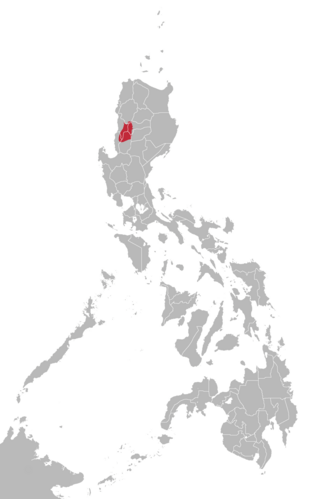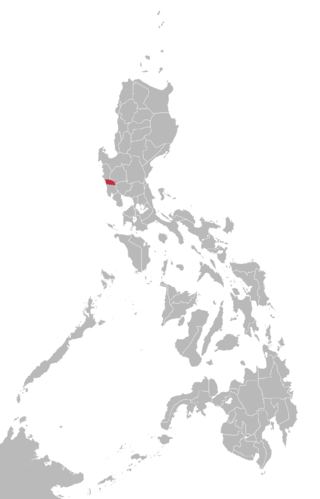Related Research Articles

Tagalog is an Austronesian language spoken as a first language by the ethnic Tagalog people, who make up a quarter of the population of the Philippines, and as a second language by the majority, mostly as or through Filipino. Its standardized, codified, national or nationalized, intellectualized, more linguistically inclusive, more linguistically dynamic, and expanded or broadened form, officially named Filipino, is the national language of the Philippines, and is one of the latter's two official languages, alongside English. Tagalog, like the other and as one of the regional languages of the Philippines, which majority are Austronesian, is one of the auxiliary official languages of the Philippines in the regions and also one of the auxiliary media of instruction therein.
A vowel is a syllabic speech sound pronounced without any stricture in the vocal tract. Vowels are one of the two principal classes of speech sounds, the other being the consonant. Vowels vary in quality, in loudness and also in quantity (length). They are usually voiced and are closely involved in prosodic variation such as tone, intonation and stress.

Ë, ë (e-diaeresis) is a letter in the Albanian, Kashubian, Emilian, Romagnol, Ladin, and Lenape alphabets. As a variant of the letter e, it also appears in Acehnese, Afrikaans, Belarusian, Breton, Dutch, English, Filipino, French, Luxembourgish, Piedmontese, Russian, the Abruzzese dialect of the Neapolitan language, and the Ascolano dialect. The letter is also used in Seneca, Taiwanese Hokkien, Turoyo, and Uyghur when written in Latin script.

Cebuano is an Austronesian language spoken in the southern Philippines. It is natively, though informally, called by its generic term Bisayâ or Binisayâ and sometimes referred to in English sources as Cebuan. It is spoken by the Visayan ethnolinguistic groups native to the islands of Cebu, Bohol, Siquijor, the eastern half of Negros, the western half of Leyte, and the northern coastal areas of Northern Mindanao and the eastern part of Zamboanga del Norte due to Spanish settlements during the 18th century. In modern times, it has also spread to the Davao Region, Cotabato, Camiguin, parts of the Dinagat Islands, and the lowland regions of Caraga, often displacing native languages in those areas.

Pangasinan (Pangasinense) is an Austronesian language, and one of the eight major languages of the Philippines. It is the primary and predominant language of the entire province of Pangasinan and northern Tarlac, on the northern part of Luzon's central plains geographic region, most of whom belong to the Pangasinan ethnic group. Pangasinan is also spoken in southwestern La Union, as well as in the municipalities of Benguet, Nueva Vizcaya, Nueva Ecija, and Zambales that border Pangasinan. A few Aeta groups and most Sambal in Central Luzon's northern part also understand and even speak Pangasinan as well.

Kapampangan, Capampáñgan, or Pampangan is an Austronesian language, and one of the eight major languages of the Philippines. It is the primary and predominant language of the entire province of Pampanga and southern Tarlac, on the southern part of Luzon's central plains geographic region, where the Kapampangan ethnic group resides. Kapampangan is also spoken in northeastern Bataan, as well as in the provinces of Bulacan, Nueva Ecija, and Zambales that border Pampanga. It is further spoken as a second language by a few Aeta groups in the southern part of Central Luzon. The language is known honorifically as Amánung Sísuan.

Kankanaey is a South-Central Cordilleran language under the Austronesian family spoken on the island of Luzon in the Philippines primarily by the Kankanaey people. Alternate names for the language include Central Kankanaey, Kankanai, and Kankanay. It is widely used by Cordillerans, alongside Ilocano, specifically people from Mountain Province and people from the northern part of the Benguet Province. Kankanaey has a slight mutual intelligibility with the Ilocano language.
The Tawbuid language is a language spoken by Tawbuid Mangyans in the province of Mindoro in the Philippines. It is divided into eastern and western dialects. The Bangon Mangyans also speak the western dialect of Tawbuid.
The Sambalic languages are a part of the Central Luzon language family spoken by the Sambals, an ethnolinguistic group on the western coastal areas of Central Luzon and the Zambales mountain ranges.

Botolan is a Sambalic language spoken by 32,867 Sambal, primarily in the Zambal municipalities of Botolan and Cabangan in the Philippines. Language status is 5 (developing).

Sambal or Sambali is a Sambalic language spoken primarily in the Zambal municipalities of Santa Cruz, Candelaria, Masinloc, Palauig, and Iba, in the Pangasinense municipality of Infanta, and areas of Pampanga in the boundary with Zambales in the Philippines; speakers can also be found in Panitian, Quezon, Palawan and Barangay Mandaragat or Buncag of Puerto Princesa. The speakers of the language are decreasing due to the fact that many of the speakers are shifting to Tagalog and Ilocano.
Abellen, Abenlen, Aburlin, or Ayta Abellen, is a Sambalic language. It has about 3,500 speakers and is spoken in a few Aeta communities in Tarlac province, Philippines. Ayta Abellen itself is part of the Sambalic language family in the Philippines and is closely related to not only the five other Ayta dialects but also the Botolan dialect of Sambal. Ethnologue reports 45 monolinguists.

Gaʼdang is an Austronesian dialect spoken in Northern Luzon, Philippines particularly in Paracelis, Mountain Province, Luzon; Potia, Ifugao Province; and Tabuk, Kalinga Province. There are some residents of speakers in Aurora and Nueva Vizcaya. Many Ga'dang speakers speak Ilocano as their second language.
Kensiu (Kensiw) is an Austroasiatic language of the Jahaic subbranch. It is spoken by a small community of 300 people in Yala Province in southern Thailand and also reportedly by a community of approximately 300 speakers in Western Malaysia in Perak and Kedah states. Speakers of this language are Negritos who are known as the Maniq people or Mani of Thailand. In Malaysia, they are counted among the Orang Asli.
Jebero is a moribund Amazonian language spoken by the Jebero people of Jeberos, Peru. It is spoken by only a small number of older adults and belongs to the Cahuapanan family together with Chayahuita.
Tboli, also Tau Bilil, Tau Bulul or Tagabilil, is an Austronesian language spoken in the southern Philippine island of Mindanao, mainly in the province of South Cotabato but also in the neighboring provinces of Sultan Kudarat and Sarangani. According to the Philippine Census from 2000, close to 100,000 Filipinos identified T'boli or Tagabili as their native language.

Babanki, or Kejom, is a Bantoid language that is spoken by the Babanki people of the Western Highlands of Cameroon.

Itneg is a South-Central Cordilleran dialect continuum found in the island of Luzon, Philippines. This language and Ilocano are spoken by the Itneg people in Abra.
This article aims to describe the phonology and phonetics of central Luxembourgish, which is regarded as the emerging standard.

Iloco is an Austronesian language predominantly spoken in the Philippines by the Ilocano people. It ranks as the third most widely spoken native language in the country and serves as a lingua franca in Northern Luzon, particularly among the Igorot people and the indigenous settlers of Cagayan Valley.
References
- ↑ Bolinao at Ethnologue (18th ed., 2015) (subscription required)
- ↑ Ethnologue (1990)
- ↑ https://www.ethnologue.com/language/smk (subscription required)
- ↑ "National Philippine Proverb in Various Philippine Languages". Carl Rubino's Homepage.
Persons, Gary. (1978). Bolinao: A Preliminary Phonemic Statement. Summer Institute of Linguistics.